
How to Install an ST Suspension Anti Sway Bar - Rear your 2005-2014 GT, V6 Mustang
Installation Time
1 hours
Tools Required
- Blocks and Wheel chocks
- Ratcheting Socket Wrench (14,15, 18 and 19mm)
- Safety Glasses
- Floor jack and Jack Stands
- Properly rated floor jacks and support stands
- Combination Wrench (14,15, 18 and 19mm)
- Torque wrench: 0-100 lb ft. range
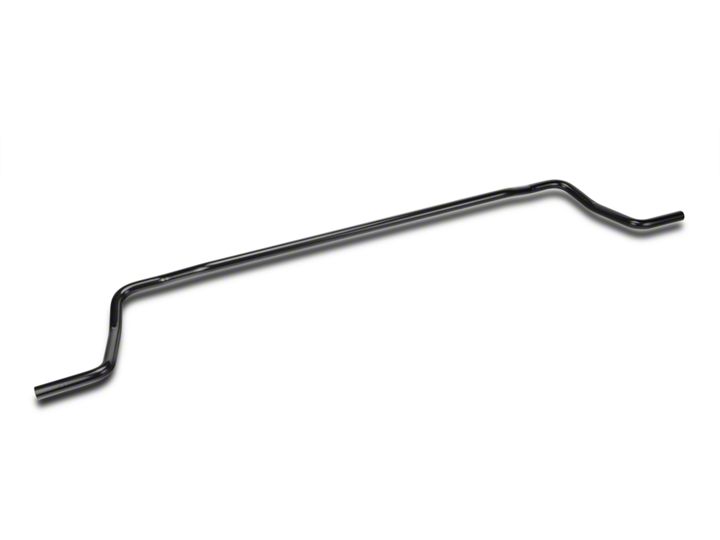
Shop Parts in this Guide
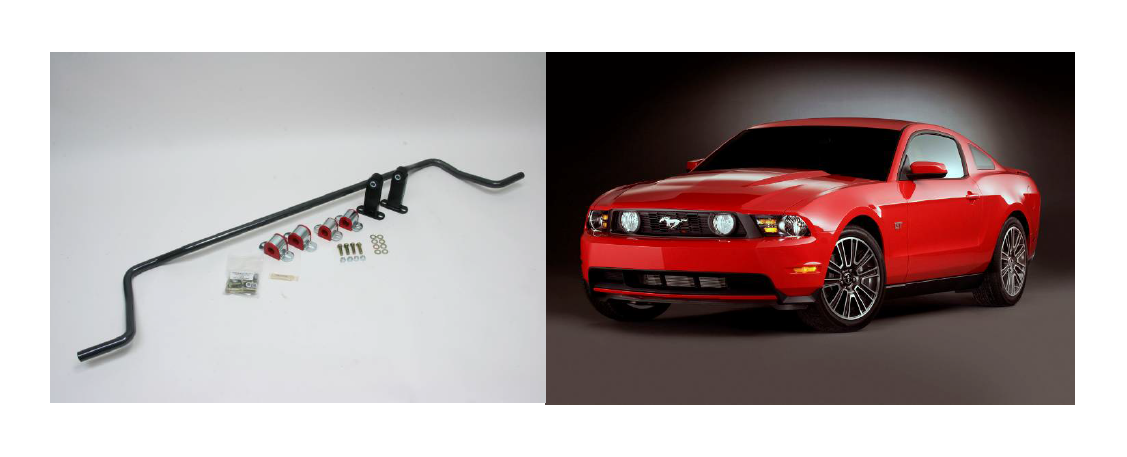
CONGRATULATIONS!
You were selective enough to choose a SUSPENSION TECHNIQUES PRODUCT. We have spent many hours developing our line of products so that you will receive maximum performance with minimum
Note: Confirm that all of the hardware listed in the parts list is in the kit. DO NOT begin this installation if any part is missing. Read the instructions thoroughly before beginning this installation.
Warning: DO NOT work under a vehicle supported by only a jack. Place support stands securely under the vehicle in the manufacturer’s specified locations unless otherwise instructed.
Warning: DO NOT drive the vehicle until all work has been completed and checked. Torque all hardware to values specified.
Reminder: Proper use of safety equipment and eye/face/hand protection is absolutely necessary when using these tools to perform procedures!
Note: It is very helpful to have an assistant available during the installation process.
Note: We DO NOT RECOMMEND using wheel ramps while performing this installation.
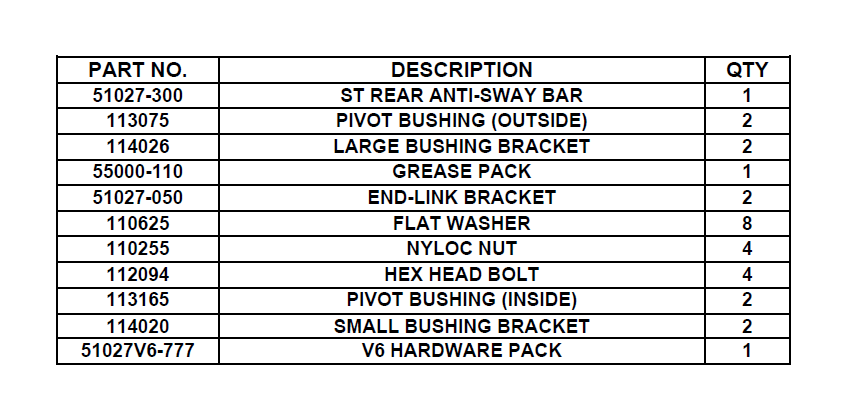
1 VEHICLE PREPERATION
1a. Open the hardware kit and remove all of the contents. Refer to the parts list to verify that all parts are present.
1b. Park the vehicle on a smooth, level concrete or seasoned asphalt surface and activate the parking brake. Block the FRONT wheels of the vehicle with appropriate wheel chocks; making sure the vehicle’s transmission is in 1st gear (manual) or “Park” (automatic).
1c. Using a properly rated floor jack, lift the REAR wheels of the vehicle off the ground. Place support stands, rated for the vehicle’s weight and in the factory specified locations. Refer to the vehicle Owner’s Manual. Prior to lowering the vehicle onto the stands, make sure the supports will securely contact the chassis.
1d. It is very important that the vehicle is properly supported during this installation to prevent personal injury and chassis damage. Make sure that the support stands are properly placed prior to performing the following procedures. We DO NOT RECOMMEND using wheel ramps while performing this installation.
1e. Slowly lower the vehicle onto the stands and, before placing the vehicle’s entire weight on them, again check that they properly and securely contact the chassis as described above. Check for possible interference with any lines, wires, cables, or other easily damaged components.
2. ORIGINAL EQUIPMENT ANTI-SWAY BAR REMOVAL
NOTE: Some vehicle models are not equipped with a stock rear anti-sway bar. If this is the case for your vehicle, move onto the installation portion of these instructions (Part 4)
2a. Locate the rear original equipment anti-sway bar. There are actually four mounting points that attach the anti-sway bar to the chassis frame
2b. Using a 15mm wrench, un-bolt the four mounting nuts that mount the ends of the original equipment anti-sway bar.
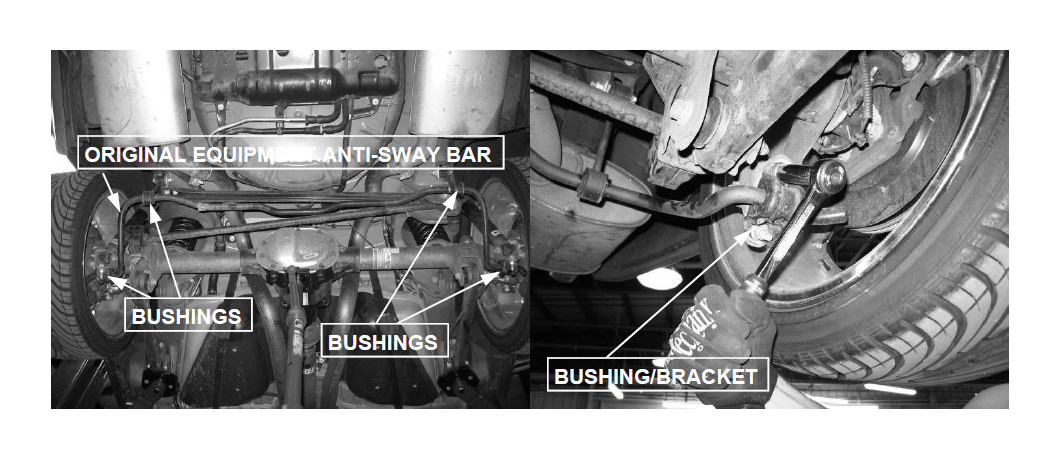
2c. Locate the top mount of the Stabilizer bar Link. Use 18mm tools, un-bolt the mounting bolt, removing the bolt completely. Leave the mounting nut, which is secured with a clip, attached to the frame .
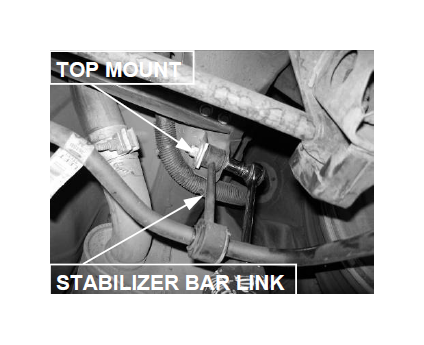
2d. Lower the original equipment anti-sway bar from the vehicle chassis.
3. INSTALLING THE NEW ANTI-SWAY BAR
3a. Mount the new Suspension Techniques Rear Anti-Sway Bar End Link Bracket from the existing chassis bracket. Use the factory nuts and bolts if your car came with a factory rear ASB. If not use the supplied large bolts and washers in the V6 Hardware Pack. Finger-tighten the mounting hardware for now.

3b. Insert the kit supplied grease into the new large bushings. Spread and clip the new large bushings onto each end of the Suspension Techniques Anti-sway Bar in the same locations as they were located on the stock original equipment anti-sway bar.
3c. NOTE: This install is made easy with the help of an assistant. If one is not available, the use of a small adjustable jack stand can be substituted.
Holding the new anti-sway bar up, secure each bushing by hand tightening both new larger (outer) bushing brackets and bushings onto the lower shock mount. The Suspension Techniques ASB is designed to be installed with the center bent section facing down.
NOTE: If your vehicle did not come with a rear ASB, use the nuts and bolts provided in the V6 Hardware Pack. Use one washer on each side of brackets as shown below.
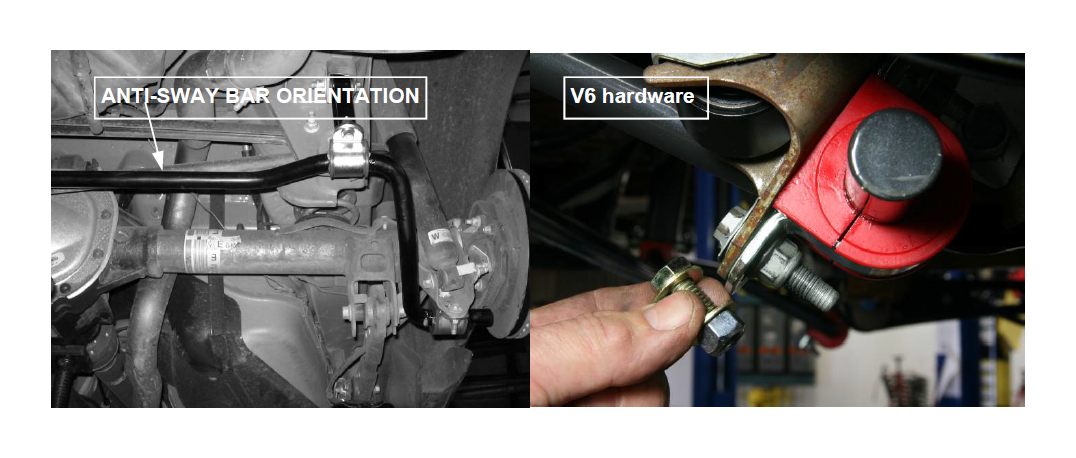
3d. Now grease into the new smaller end-link bushings. Spread and clip the new small bushings onto the Suspension Techniques Anti-sway Bar on each side of the center bend where the were located on the stock original equipment anti-sway bar.
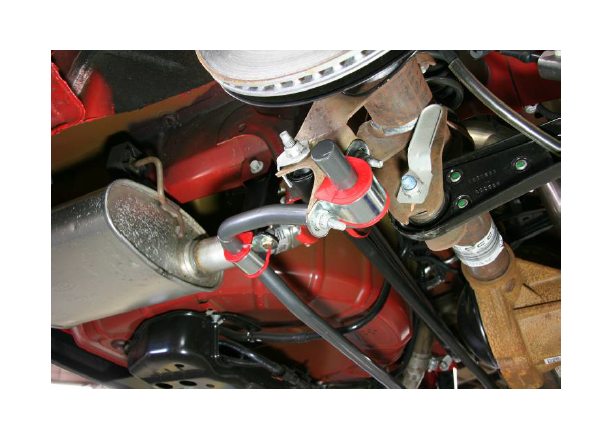
3e. Sandwich the bar and bushing between the Suspension Techniques End-Link Brackets and the bushing brackets using the supplied nuts bolts and washers.
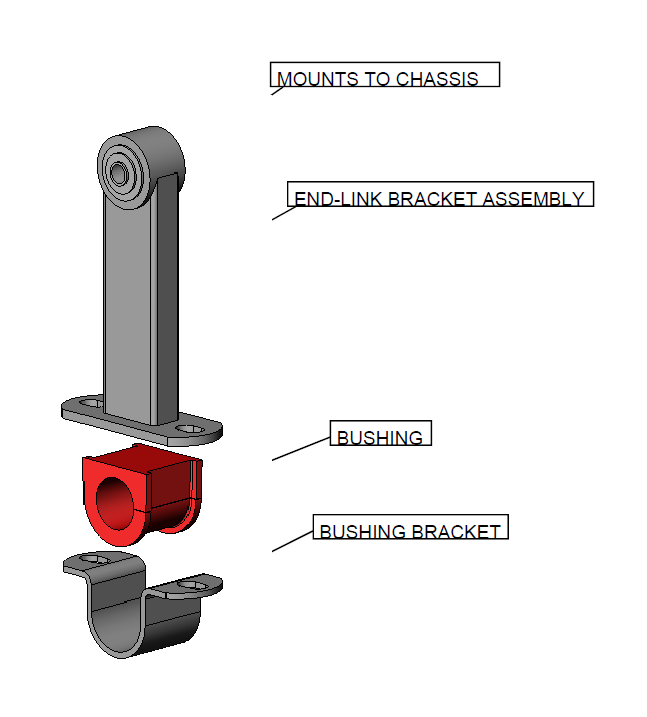
3f. Slide the ASB left or right to center the bar between all four bushings. Using a 14mm socket, tighten all four bushing bracket bolts to 52 lb•ft (70 Nm). Tighten the upper end-link bracket bolts to 85 lb•ft (115 Nm) with a 19mm socket.
5. FINALIZING THE INSTALLATION
5a. All hardware being fastened to the vehicle’s original fastening points should be torqued to the proper specifications. To prevent chassis damage, never over-torque the hardware.
5b. Check that all components and fasteners have been properly installed, tightened and torqued.
5c. Check brake hoses and other components for any possible interference.
5d. Lift the vehicle and remove the support stands. Carefully lower the vehicle to the ground.
5e. Immediately test-drive the vehicle in a remote location so that you can become accustomed to the revised driving characteristics and handling. Be aware that the vehicle will handle substantially different now that it has been modified.
5f. Installation is complete. Check all of the hardware and re-torque at intervals for the first 10, 100, 1000 miles.

